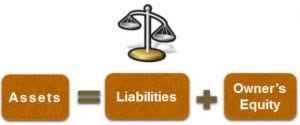
The following summarizes and explains the items found in an income statement. Not every small business owner comes to the role armed with financial expertise. If spreadsheets are not your strong suit, you may use a tool like QuickBooks to help, or delegate balancing the books to an accountant or bookkeeper.
- Together with the Balance Sheet and Cash Flow Statement, it is included in every company’s Annual Report – the publicly available, comprehensive overview of a business’ health and financial standing.
- When presenting information in the income statement, the focus should be on providing information in a manner that maximizes information relevance to the reader.
- While both of these metrics denote profits made, Gains refer to profits that don’t relate to the core business of the company.
- The most common non-operating expenses are debt interest charges, inventory write-offs, and lawsuit settlements.
- According to Accounting Tools, a company typically uses the accrual basis of accounting to record transactions in compliance with GAAP.
An income statement is a financial statement that outlines the income and expenditure of a company over a period of time. It is also known as a profit and loss statement (P&L), the statement of revenue and expense. It can show the revenue, gains, expenses, and any loss incurred during the period covered by the financial statement. For example, the P&L statement can outline the year-over-year revenue over many years, including any losses, expenses, gains, etc, during the said period. Multi-step income statements separate operational revenues and expenses from non-operating ones. They’re a little more complicated but can be useful to get a better picture of how core business activities are driving profits.
Steps to Prepare an Income Statement
A high net profit margin indicates that a company is efficient in generating profit and is able to cover all of its expenses. Earnings Before Taxes (EBT) or Income before taxes would be reported on the income statement as the income realized after deducting the expenses from the revenue. There are different formats of income statements, classified based on the names of the accounts or the function and uses. The statement of comprehensive income includes all sources of revenue and expense, including investing and financing activities.
How you calculate this figure will depend on whether or not you do cash or accrual accounting and how your company recognizes revenue, especially if you’re just calculating revenue for a single month. After preparing the skeleton of an income statement as such, it can then be integrated into a proper financial model to forecast future performance. After deducting all the above expenses, we finally arrive at the first subtotal on the income statement, Operating Income (also known as EBIT or Earnings Before Interest and Taxes). These are all expenses that go toward a loss-making sale of long-term assets, one-time or any other unusual costs, or expenses toward lawsuits. A business’s cost to continue operating and turning a profit is known as an expense.
Multi-step income statement
Sales commission, pension contributions, and payroll account also contribute to OPEX. The use of the income statement formula is simply to determine the net income, hence it can be referred to as the net income formula. The net income appears directly on the income statement which accounts are found on an income statement as the last line; hence it is also called the bottom line. The net income is the money that is available to the shareholders or the owner of a sole proprietorship. The cost of goods sold (COGS), therefore, is the direct cost incurred before a product is produced and sold.

An income statement lists a company’s revenues and expenses during a specific period of time, typically one year. The operating statement can either be prepared using the accrual method or the cash method. The accrual method records revenues when they are earned and expenses when they are incurred, regardless of when the cash is actually received or paid. The cash method records revenues when cash is received and expenses when cash is paid out. Most companies use the accrual method because it provides a more accurate portrayal of a company’s financial activity.
How to Set Up a Line of Credit Account in Quicken
For one thing, this statement does not quantify the company’s overall worth; that is what the balance sheet reflects. Nor does the income statement show the company’s current cash position and its ability to pay debts and other expenses. Thus, creditors will be less interested in the income statement and more interested in the cash flow statement and the balance sheet. An income statement is an important financial report that provides rich information on how a business or company is doing and how it’s likely to perform in the future.

A company with a higher ROE is more profitable and efficient than one with a lower ROE. A high interest coverage ratio indicates that a company can easily pay its interest expenses, while a low ratio suggests that a company may have difficulty meeting its obligations. The carriage inwards is the cost incurred by a company to transport materials from the supplier to the company. The Revenue, Gains, Expenses, and Losses make up the 4 parts of an income statement. Just looking at the percentages does not tell you whether the amount of dollars that made the 10% of the rent in January is actually lower or higher than the amount of dollars that makes the 15% of February.
Financial performance, or results of operations, is primarily measured by computing the net income. J.C. Penney is a great example of the importance of looking at the complete financial picture. Although $12.5 billion in revenue appears impressive, debt servicing costs meant the company took a loss for the year. It’s worth noting that examining the financials of any company works best when comparing over multiple periods and against other companies within the same industry. Investors and creditors analyze the balance sheet to determine how well management is putting a company’s resources to work. Total assets should equal the sum of total liabilities and shareholders’ equity.
- These periodic statements are aggregated into total values for quarterly and annual results.
- For example, if your small business has $100,000 in its revenue account at the end of the quarter, you would report $100,000 in revenue on your income statement and set the balance to zero for the next quarter.
- Akaunting provides a comprehensive bookkeeping solution for a bird’s eye view of your business.
- The applications vary slightly from program to program, but all ask for some personal background information.
- These are all expenses incurred for earning the average operating revenue linked to the primary activity of the business.
